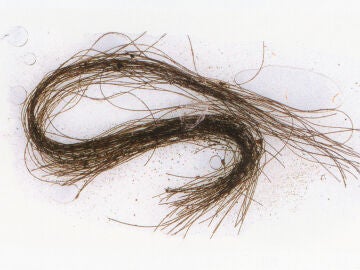
An analysis of locks of human hair from a cemetery in Menorca indicates that ancient human civilizations they used hallucinogenic drugs derived from plants about 3,000 years ago, in the middle of the Bronze Age. The study, published Thursday in the journal Scientific Reports, is the first direct evidence of the use of ancient drugs in Europe, which may have been used as part of ritual ceremonies.
Previous evidence of prehistoric drug use in Europe has been based on indirect evidencesuch as the detection of opium alkaloids in Bronze Age containers, the finding of remains of drug plants in ritual contexts, and the appearance of drug plants in artistic representations.
Elisa Guerra-Doce, from the University of Valladolid, and her colleagues examined locks of hair from the cave of Es Càrritx, in Menorca, first occupied about 3,600 years ago and contained a chamber used as a burial space until about 2,800 years ago.
Previous research suggests that around 210 people were buried in this chamber. However, the hair strands of only certain individuals were dyed red, were placed in wooden containers and horn decorated with concentric circles and taken to a separate sealed chamber further back in the cave. Those hairs date back about 3,000 years.
The authors used ultra-high performance liquid chromatography and high-resolution mass spectroscopy to assess for the presence of the alkaloids atropine, scopolamine, and ephedrine. atropine and scopolamine are naturally found in the nightshade family and can induce delirium, hallucinations, and impaired sensory perception.
Ephedrine is a stimulant derived from certain species of shrubs and pine trees that can increase arousal, alertness, and physical activity. The authors detected scopolamine, ephedrine, and atropine in three replicate hair samples.
rituals with shaman
The researchers suggest that the presence of these alkaloids may be due to consumption of some nightshade plants, such as the mandrake (‘Mandragora autumnalis’), the henbane (‘Hyoscyamus albus’), the prickly apple (‘Datura stramonium’) and the common pine (‘Ephedra fragilis’). The authors suggest that these medicinal plants may have been used as part of ritual ceremonies performed by a shaman.
The concentric circles on the wooden containers may have represented eyes and could have been a metaphor for inner vision related to a drug-induced altered state of consciousness. Due to cultural changes about 2,800 years agothe authors speculate that the wooden containers were sealed in the cave chamber to preserve these ancient traditions.
Source: Lasexta
Bruce is a talented author and journalist with a passion for entertainment . He currently works as a writer at the 247 News Agency, where he has established himself as a respected voice in the industry.











